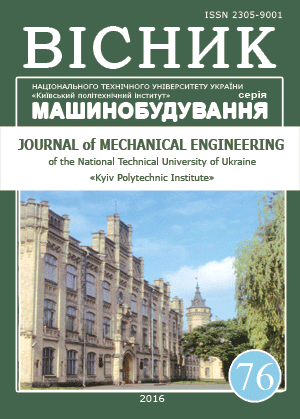THE SYSTEM REPRESENTATION OF COMPLEX TECHNICAL OBJECTS IN THE TASKS ANALYSIS AND SYNTHESIS
DOI:
https://doi.org/10.20535/2305-9001.2016.76.68755Keywords:
Complex technical object, hierarchical model, structure, functioning, propertyAbstract
The purpose of the work is development of methodology representation of complex technical objects. The basis of object analysis is the notions of structure, functioning and property. The object is represented in form of two hierarchical models of the structure and properties. The opening mechanism of interaction for models is the feature of representation. Interaction is provided by functioning process. The structure components make required transformations and the results are the obtained properties. Hierarchy of the properties forms the set of properties that provided the object destination. There is the interaction diagram of the structure and properties by functioning process. As example of the complex technical object the pump station is considered. The hierarchical models of the structure and properties with interaction across functioning process are presented. Diagram for pump is detailed. Application of refined representation will reduce the time spent on decision analysis and synthesis problemsReferences
Buch, G. (1992), Object-oriented design with application examples, Konkord, Moscow, Russian.
Skurihin, V.I., Kvachev V.G., Valkman U.R., Jkovenko L.P. (1990), AN UkrSSR. Institut kibernetiki im. V.M. Glushkova, [Information Technology in the testing of complex objects: methods and tools], Naukova dumka, Kiev, Ukraine.
Uzunov, A. (2009), [Modular approach to object modeling task with hydraulic components]. Promislova gіdravlіka і pnevmatika. Vseukraїns'kij naukovo-tehnіchnij vіsnik, no 1(23). pp. 61-66.
Uzunov, O. (2012), The cyclic-modular approach to simulation and design of the mechatronic objects. The arhive of mechanical engineering, vol. LXX, pp.5-19.

